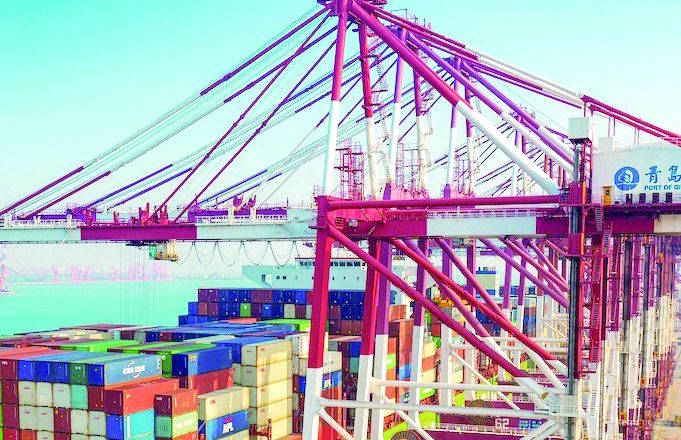
The economy faces significant challenges today such as rising current account deficit, increasing inflation and high volatility in exchange rate. The current account deficit in October 2021, as reported by State Bank of Pakistan (SBP), was $1.66 billion, a marked difference from the current account surplus of $448 million reported in October 2020.
Although the export receipts rose by $600 million in October 2021 compared to the value reported in October 2020, the import payments increased by approximately $2.7 billion. Consequently, the deficit between the receipts and the payments widened by $2.1 billion in October 2021.
The workers’ remittances, which constitute a major component of the dollar inflows into Pakistan, rose by approximately $230 million year-on-year in October 2021. The current account deficit exceeded $5 billion in the first four months of fiscal year 2021-22. Comparatively, the current account reported a surplus of $1.3 billion in the first four months of FY21.
The central bank increased the policy rate by 150 basis points on November 19, 2021 while the rupee continued to depreciate. As the Covid-19 pandemic recedes, the cushion that was provided to the policymakers in terms of a relatively favourable current account balance, low policy rates and lower volatility in the exchange rate has subsequently vanished. The challenges on the external front remain abound.
According to the monetary policy statement released by the State Bank of Pakistan (SBP) in November 2021, the heightened inflation and the challenges to the balance of payment are a result of both global and domestic uncertainties. As the world economy recovered from the pandemic shock, global and regional supply chains have been adversely impacted as disruptions have increased commodity and energy prices. The shipping costs are lingering at their highest level while the logistics sector is reporting significant delays. This has created challenges on the domestic front accompanied by higher import prices, translating into higher inflation expectations. With inflation following an upward trend, the much expected intervention by SBP in terms of hiking the policy rate will likely dampen the forecasts on economic growth rates.
The statistics published by Pakistan Bureau of Statistics (PBS) on imports suggest that import prices have risen in the current fiscal year. For instance, Pakistan imported approximately 10% more in terms of quantity of petroleum products in the first four month of FY22 over the same time period of previous fiscal year. However, the total value of imports increased by 92% in dollar terms. Similarly, Pakistan imported 29% more raw cotton in quantity terms but 69% in dollar terms. The import volume of synthetic fiber decreased by 1% but the value in dollar terms increased by 59%.
The sharp differences can also be observed for the import of fertiliser. In essence, the value of imports has increased far more than the quantity of imports. It will be interesting to determine whether the preference has shifted towards higher quality of imports or not.
The lack of sophistication of products and poor levels of innovation of producers in Pakistan are likely to inhibit such transformation. However, with rising costs of inputs and low levels of productivity, it is likely that the transmission of input price to the consumers is high, particularly if producers fail to modify production techniques accordingly. The increase in input prices at a time when Pakistan is approaching the IMF for financial support adds to the challenges faced by the government.
Even though the total exports from Pakistan in the first four months of FY22 have increased by 25% in dollar terms and the textile exports have increased by 27% over the value reported in the first four months of FY21, the increase is likely driven by the changes in price levels. The export of cotton cloth in terms of quantity has decreased 76%, while the dollar value has increased by 19%. The rise in export value per unit is likely driven either by higher global prices, shift towards higher quality output or capturing market share from competitors in markets where buyers are willing to pay more per unit.
A micro-level analysis will help explain this pattern better. As prices of goods increase, opportunities for new entrants to compete and innovate also improve. In essence, the rising input costs and higher output prices of goods need to be analysed in greater depth in order to make export growth sustainable, particularly as the recovery in global and regional competition from the pandemic shock becomes an important concern to domestic producers.
The Economic Advisory Group (EAG) in its recent document “New Vision for Economic Transformation” highlighted the need to reallocate resources towards more productive activities to ensure a sustainable path of higher economic growth.
The report recommended the need to reward innovators instead of picking winners by ensuring that firms have the right incentives to boost their capabilities. Iqbal and Nakhoda, in a recent study published in Pakistan Development Review on determinants of employment growth among manufacturing firms in Pakistan, found empirical support for size-based policies rather than age-based policies. Employment dynamism is concentrated amongst the smaller firms.
Similar to the recommendations published by EAG, the aforementioned studies stress the need for formal training programs to boost employment growth. Strengthening and expanding vocational education by enhancing the quality of TVET sectors can aid employment growth significantly in Pakistan.
In essence, the improvement in the capabilities of firms is increasingly important in order to ensure not only higher productivity levels but also improved participation in international trade.
The Pakistan Development Report recently published by the World Bank focused particularly on the revival of exports from Pakistan. It emphasised that government policies focused on incentivising the incumbent producers rather than increasing the number of innovators.
Low entry and exit rates in Pakistan signify the lack of competitive pressures and the desire to innovate while duty drawbacks tend to favor the large incumbents characterised by low productivity and innovation. Therefore, firms lack the ability to grab opportunities that could increase improve their overall productivity levels.
The writer is Assistant Professor of Economics and Research Fellow at Centre for Business and Economic Research, IBA
Published in The Express Tribune, November 29th, 2021.
Like Business on Facebook, follow @TribuneBiz on Twitter to stay informed and join in the conversation.

































1713853507-0/MalalaHilary-(2)1713853507-0-270x192.webp)








COMMENTS
Comments are moderated and generally will be posted if they are on-topic and not abusive.
For more information, please see our Comments FAQ